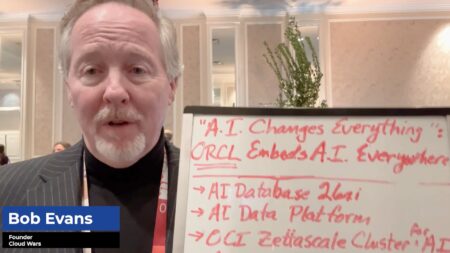Project management is often a difficult task, as more IT project managers are using data analytics for additional help. Data analytics can eliminate the guesswork of decision-making while also providing more support for project managers to better guide their team members. Data-driven decision-making from IT project managers makes it easier to schedule work, manage resources, boost efficiency, reduce expenses, and better manage risks.
Data-Driven Decisions Equals Improving Outcomes
One of the main keys for IT project managers in leveraging data is by using business analytics. Business intelligence (BI) uses software to gather, organize, and analyze data from a variety of sources while also converting this information into useful data. BI is a type of descriptive analytics that uses past and present data to gain valuable insights into what is happening or happened during a particular process. Access to real-time metrics improves the decision-making process and increases visibility across projects, processes, and their eventual outcomes.
On the other hand, business analytics (BA) is considered predictive, as it primarily focuses on the “why” to make more informed predictions for the future. All of this data is analyzed to improve the prediction of challenges and adapt to better outcomes.
Many forward-thinking project managers recognize the importance of decisions to be supported by data. An IT project manager relying on data-driven decision-making is especially valuable in managing and allocating scarce resources.
Here is how an IT project manager can use data analytics to improve the final outcome of each project.
1) Managing Resources
Resource management is often a challenging task for project managers due to resources often being scarce while also constantly changing. The ever-evolving nature of resources makes it difficult to create plans for managing each project, let alone trying to handle multiple projects competing for the same resources. Data analytics is essential in allowing IT project managers to make better decisions involving the availability and allocation of resources. The success of a project usually depends on the ability to match skills and manage the best available resources.
Access to all types of information from past and current projects is helpful in allowing IT project managers to improve resource allocation for existing projects while also making plans for the future. Gathering and analyzing all of this information in one place enables project managers to identify which resources are underutilized or overutilized, which gives them the flexibility to move resources around to increase efficiency.
Businesses only using Excel sheets instead of BI tools integrated with project management software are usually at a disadvantage. On the other hand, integrated BI tools can often reduce staff workload and decrease the feeling of burnout. Using these tools makes it easier to maintain realistic scheduling times, which keeps customers happy and boosts the bottom line for your business. Data analytics makes it possible for IT project managers to use this information to ensure tasks are completed on time without any resource conflicts.
2) Improving Efficiencies
Business analytics makes it possible to reduce cumbersome workflows by automatically alerting project managers on any changes that can improve how employees communicate and work together. For example, identifying and addressing these inefficiencies allows an IT project manager to focus on higher-value work and deliver projects much quicker. Gathering all of this data about business operations enables project managers to find bottlenecks and other process problems to create a path towards lasting change.
Data analytics can easily identity inefficient processes and play a key role in improving outcomes for businesses. Using these analytical skills is a great way to create KPIs to measure time spent on tasks, employee mistakes, or the different number of change requests.
3) Manage Risks
Risks often come in a variety of ways, whether it’s internal or external sources. These risks may only have a minor impact on a project, while a major risk can affect the entire program. Unfortunately, many businesses stay in reactionary mode with risk and compliance instead of becoming proactive against potential issues.
Compliance management is one of the key areas that data analytics can help an IT project manager in identifying potential issues. All of this data gives project managers accurate information to isolate risks from past or existing projects. This approach towards risk management often prevents problems from occurring instead of being in a reactive approach.
4) Using BI Tools
One of the main keys to achieving valuable insight is understanding which types of data are needed for making critical decisions, which is especially important during times of uncertainty. Analyzing the features of BI tools is important to ensure they offer relevant insight for IT project managers to support a company in reaching its project goals. Access to a wide range of BI features integrated into project management isn’t always beneficial, as having the right features is much more essential for project managers.
Here are a few of the main features to look for in BI tools.
• Import and update data with a click of a button
• Integration of “what if” analysis to improve resource planning
• Forecasting and modeling capabilities
• Customizable dashboard in real-time
• Easy to use drag and drop interface
• Simple visual charts and graphics
• Reporting functions
• Easily share data with stakeholders
• Secure mobile access for remote workers
• Simple self-service options for users
• Easily integrate with other applications
• Secure role-based employee access
BI features and capabilities will often differ due to the project. Project managers need to ensure that it has the capabilities for improving outcomes and making better data-driven decisions. An IT project manager can leverage data analytics to gain valuable insights involving resource management, improving communication, and risk assessment. Using analytics is a great way to streamline project manager responsibilities and maximize efficiency in the workplace.
Related DAC Content:
Back @ IT: Industry Impacts – The Tech, The People, and You
Artificial intelligence Ethics and Dangers: How to Handle AI Concerns
Editor’s Summary: Microsoft proposes incentivizing digital solutions to mitigate supply chain risk
Project Change Management Strategy & Execution Tips
Top IT Project Management Challenges






